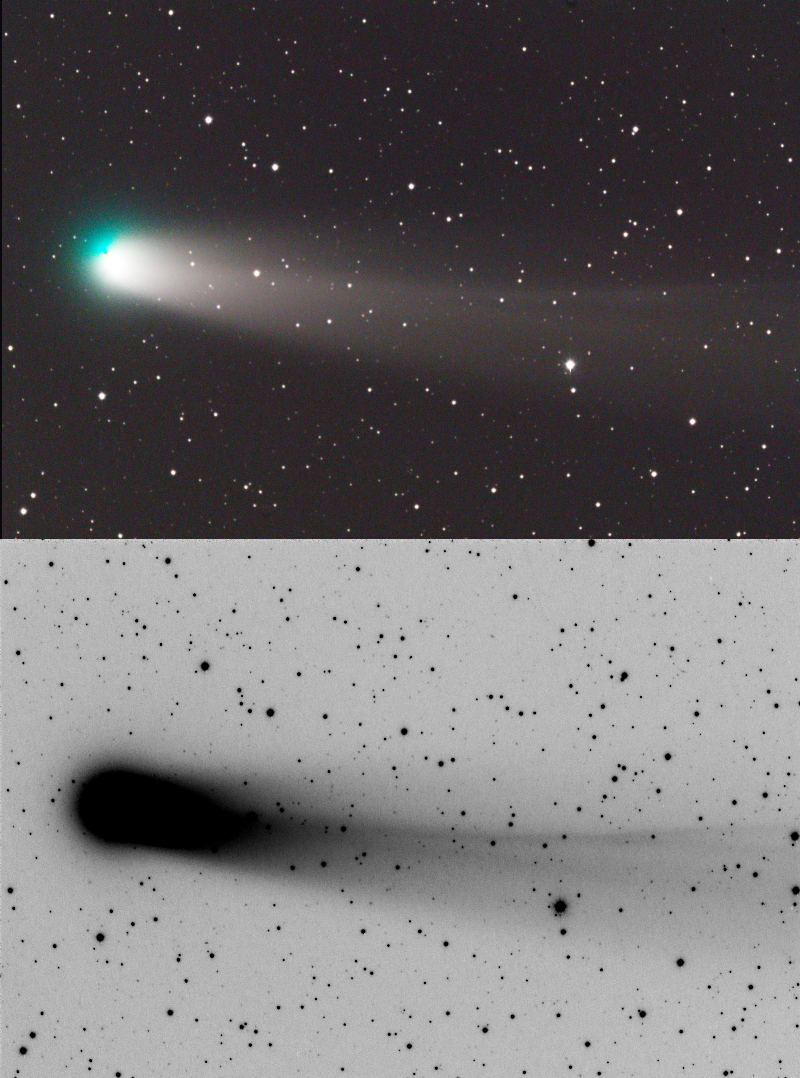|
Date + Time
............................... 09 / 12 /2013-
03:00 UTC
Location .................................... "Nunki
Observatory" - Skiathos
Optics .........................................
Takahashi
TSA 102
Tools
..........................................
The Sky X
Camera ..................................... SBIG
ST-10XE with CFW10 (Astrodon filters)
Exposure Time.......................
Luminance: 5X 120 sec RGB: 1X60 sec
More Details ...........................
Environment Temperature : 8οC Camera Temperature -15οC
Mount .......................................
Paramount ME
Guiding ....................................
Unguided
Processing Details ................ Photoshop ,
Maxim
Notes ........................................ Weather:
7/10 - Transparence: 5/6 - Humidity : 65%
Target details ......................... C/2013
R1 (Lovejoy) is a
long-period comet discovered on 7 September 2013 by Terry
Lovejoy using a 0.2-meter (7.9 in) Schmidt–Cassegrain
telescope.C/2013 R1 crossed the celestial equator on 14
October 2013 becoming a better northern hemisphere object.
By 1 November 2013 the comet was seen by the naked eye.As of
early November 2013 it was more impressive than comet ISON.
The comet could be seen near the Beehive Cluster (M44) half
way between Jupiter and Regulus. In binoculars, the comet
has the appearance of a green unresolved globular cluster.
C/2013 R1 made its closest approach to Earth on 19 November
2013 at a distance of 0.3967 AU (59,350,000 km; 36,880,000
mi). The comet reached an apparent magnitude of about 4.5.
On 27 November 2013 the comet was in the constellation of
Canes Venatici near the bottom of the handle of the Big
Dipper. From 28 November until 4 December 2013, the comet
was in the constellation Boötes. On 1 December 2013 it
passed the star Beta Boötis.
From 4 December until 12 December 2013, the comet will be in
the constellation Corona Borealis. On 14 December 2013 it
will pass the star Zeta Herculis. The comet will come to
perihelion (closest approach to the Sun) on 22 December 2013
at a distance of 0.81AU from the Sun. |
